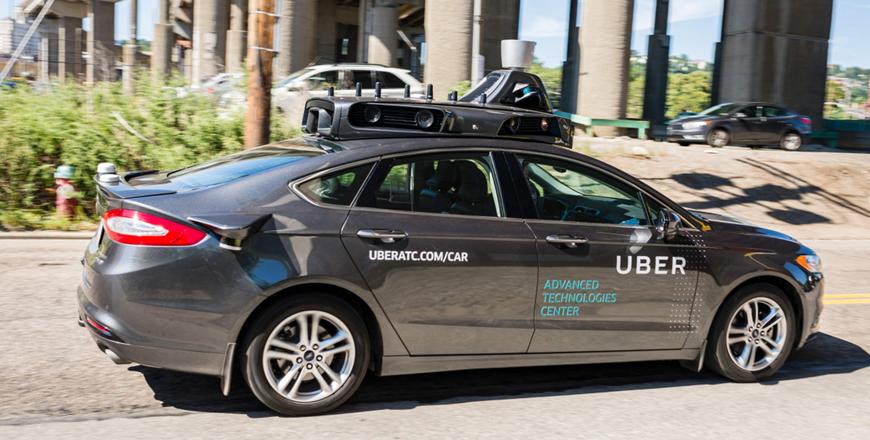You are here
US moves to regulate self-driving cars
By AFP - Sep 21,2016 - Last updated at Sep 21,2016

A pilot model of an Uber self-driving car drives down a street in Pittsburgh, Pennsylvania, in undated photo (AFP photo by Angelo Merendino)
WASHINGTON — The United States unveiled Monday a sweeping new regulatory framework for the unexpectedly rapid rise of self-driving automobile technology, just days after Uber broke ground with its first driverless taxis.
US Transportation Secretary Anthony Foxx said the federal government intends to set the safety standards for cars of the future where no human is involved in the driving, even while individual states still regulate cars with humans behind the wheel.
But some of the rules will extend to advanced driver-assistance systems, like those in Teslas, that can handle significant levels of driving even while demanding a person stay at the wheel of the car, officials said.
Announcing a 15-point safety assessment for driverless car systems, Foxx stressed that the government wants to work with developers — which include most large automakers as well as tech giants such as Uber and Alphabet (Google) — without stifling their efforts.
“This area we recognise as an evolving area. This is an emerging technology,” he announced.
Software at the wheel
Foxx pointed out that drivers and cars have long been regulated by individual states in a “patchwork” of laws.
“The dynamic with the autonomous car is that the software is now operating the vehicle. And... when the software is operating the vehicle, that is an area that we intend to regulate.”
The 15 points by which driverless cars, or “highly automated vehicles” (HAVs), will be judged, include:
- the vehicle’s perception and response functionality
- how well the cars manage in case of technical failures
- data recording and information sharing capabilities
- user privacy
- security from hacking
Also on the list are “ethical considerations”, how self-driving vehicles are programmed to handle conflict dilemmas on the road. Programmers are wrestling, for example, with the reaction a self-driving car should have when, for instance, it is faced with the limited choice of smashing into a loaded bus on one side or a bicyclist on the other.
Eager to accelerate
Jeff Zients, director of the White House’s National Economic Council, said the government is strongly behind the development of autonomous vehicles.
“Automated vehicles will save Americans time, money and lives, and that’s why we are putting out the rules of the road for self-driving cars. So they can get on the road as quickly, and as safely, as possible,” he said.
Self-Driving Coalition for Safer Streets, founding members of which include Ford, Google, Lyft, Uber and Volvo, called the regulatory framework “an important first step: in the deployment of autonomous cars”.
“A federal approach to the self-driving industry will be key to enhancing motor vehicle safety while continuing to promote US leadership, competitiveness and innovation,” coalition general counsel David Strickland said in a release.
The coalition supports guidelines that standardise self-driving regulations across the country, avoiding confusion and lost industry momentum that would be cause by rules that vary from state to state.
The group also advocates for regulation that incentivises innovation, and supports rapid testing and deployment in the real world.
“We look forward to continued collaboration with NHTSA and other federal and state policymakers to further develop the national framework for safe and timely deployment that avoids a patchwork of requirements that could inhibit self-driving vehicle development and operations,” Strickland said.
Related Articles
WASHINGTON/DETROIT — US vehicle safety regulators have said the artificial intelligence system piloting a self-driving Google car coul
SAN FRANCISCO — Google parent Alphabet on Tuesday announced that it has partnered with Fiat Chrysler in a major expansion of its fleet
SAN FRANCISCO — Google and Tesla agree autonomous vehicles will make streets safer, and both are racing towards a driverless future.











